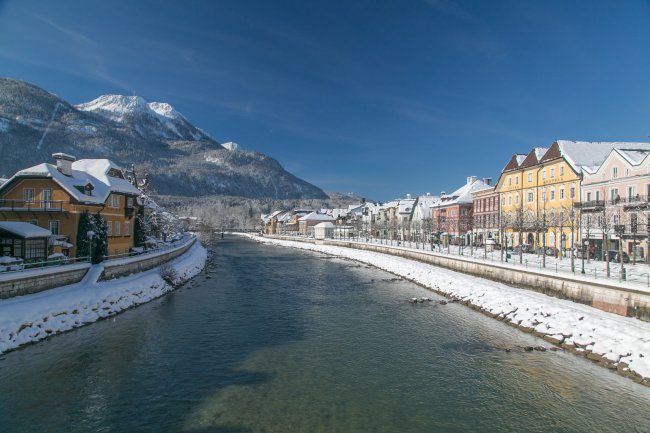Bad Ischl
Once, the small Ischl lay on the salt route, the Traun, on which Hallstatt's salt was transported to its destinations.
When Franz Josef first saw the light of day on August 18th, 1830, the people of Ischl celebrated the birth of the heir to the throne with particular enthusiasm. The positive and healing effects of the Ischl brine baths were given credit for the birth. His mother, archduchess Sophie, had sought them out.
The guests who sojourned at that time to Ischl for treatment did not recognize the place from one summer to the next. The aspiring spa town went through a rapid architectural transformation from a rural, tiny market town to a chic, luxurious bathing resort.
If you come to Ischl today, it's hard not to make a comparison with the imperial Vienna. As of 1848, Ischl served as the imperial summer residence and the center of courtly festivals. High nobility, prominent politicians, and artists of literature, painting and music all gathered here.
Arthur Schnitzer, Alfred Nobel, Johann Nestroy, Karl Kraus, Adalbert Stifter, Ferdinand Waldmüller, Johannes Brahms, Anton Bruckner, Johann Strauß, Franz Lehár, and last but definitely not least Emperor Franz Josef I. and Empress Elisabeth lead a sheer endless list of those personalities who were searching for inspiration and relaxation, and some of whom even built their own Villas here.
Then as now, spa guests and others alike forgot every dietary concern upon a visit to the Konditorei Zauner (confectionary). The people sauntered by Emperor Franz Josef I. and Elisabeth of Bavaria's (Sisi) betrothal house on the most famous esplanade of the Danube Monarchy, or they rented some of the sedan chair carriers waiting in front of the Trinkhalle.
As homage to the times when Ischl was regarded as a kind of "kitchen" for operettas, the town holds the annual Operetta Weeks in the summer.








